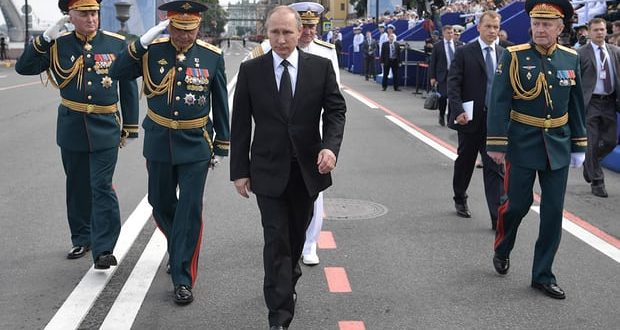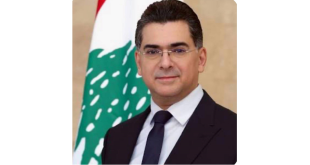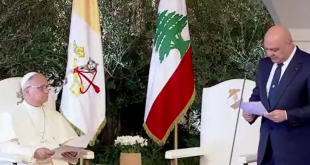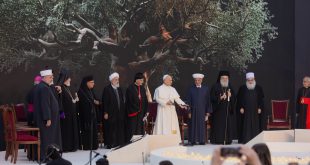Western officials and analysts estimate up to 100,000 military personnel and logistical support could participate in the Zapad (West) 17 exercise, which will take place next month in Belarus, Kaliningrad and Russia itself. Moscow puts the number significantly lower.
The exercise, to be held from 14-20 September, comes against a backdrop of strained relations between Russia and the US. Congress recently imposed a fresh round of sanctions on Moscow in response to allegations of interference in the 2016 US election.
The first of the Russian troops are scheduled to arrive in Belarus in mid-August.
Moscow has portrayed Zapad 17 as a regular exercise, held every four years, planned long ago and not a reaction to the latest round of sanctions.
Nato headquarters in Brussels said it had no plans to respond to the manoeuvres by deploying more troops along the Russian border.
A Nato official said: “Nato will closely monitor exercise Zapad 17 but we are not planning any large exercises during Zapad 17. Our exercises are planned long in advance and are not related to the Russian exercise.”
The US vice-president, Mike Pence, discussed Zapad 17 during a visit to Estonia in July and raised the possibility of deploying the US Patriot missile defence system in the country. The US may deploy extra troops to eastern Europe during the course of the exercise and delay the planned rotation of others.
The commander of US Army Europe, Lt Gen Ben Hodges, told a press conference in Hungary in July: “Everybody that lives close to the western military district is a little bit worried because they hear about the size of the exercise.”
The Russian armed forces have undergone rapid modernisation over the last decade and Zapad offers them a chance to train en masse.
Moscow blames growing west-east tensions on the expansion of Nato eastwards and in recent years the deployment of more Nato forces in countries bordering Russia. Nato says the increased deployments are in response to the Russian annexation of Crimea in 2013.
Russia has not said how many troops will participate in Zapad 17 but the Russian ambassador to Nato, Aleksander Grushko, said it was not envisioned that any of the manoeuvres would involve more than 13,000 troops, the limit at which Russia – under an international agreement – would be obliged to allow military from other countries to observe the exercise.
Russia could, theoretically, divide the exercise into separate parts in order to keep below the 13,000 limit. Western analysts said the last Zapad exercise in 2013 involved an estimated 70,000 military and support personnel, even though Russia informed Nato in the run-up it would not exceed 13,000.
Igor Sutyagin, co-author of Russia’s New Ground Forces, to be officially published on 20 September, said: “Unfortunately, you can’t trust what the Russians say.” He said: “One hundred thousand is probably exaggerated but 18,000 is absolutely realistic.”
He did not envisage an attack on the Baltic states, given they are members of Nato. “Well, there are easier ways to commit suicide,” he said. But Putin is a master at doing the unexpected, he said, and Russia could take action elsewhere, such as taking more land in Georgia.
In a joint paper published in May, Col Tomasz Kowalik, a former special assistant to the chairman of Nato’s military committee and a director at the Polish ministry of national defence, and Dominik Jankowski, a senior official at the Polish ministry of foreign affairs, wrote that Russia had ordered 4,000 railcars to transport its troops to Belarus and estimated that could amount to 30,000 military personnel.
Adding in troops already in place in Belarus and the Russian enclave of Kaliningrad as well as troops arriving by air, it might be the largest Russian exercise since 1991.
Nato said its biggest exercise this year, Trident Javelin 17, running from 8-17 November, would involve only 3,000 troops. Trident Javelin 17 is to prepare for next year’s bigger exercise, Trident Juncture 2018, which will involve an estimated 35,000 troops.
The Nato official added: “We have increased our military presence in the eastern part of the alliance in response to Russia’s illegal annexation of Crimea and its military buildup in the region. We have four multinational Nato battle-groups in place in the Baltic states and Poland, a concrete reminder that an attack on one ally is an an attack on all. However, Nato’s force posture is not in reaction to Zapad 17.”
During the cold war, Zapad was the biggest training exercise of the Soviet Union and involved an estimated 100,000 to 150,000 personnel. After the collapse of the Soviet Union, it was resurrected in 1999 and has been held every four years since.
 Lebanese Ministry of Information
Lebanese Ministry of Information



